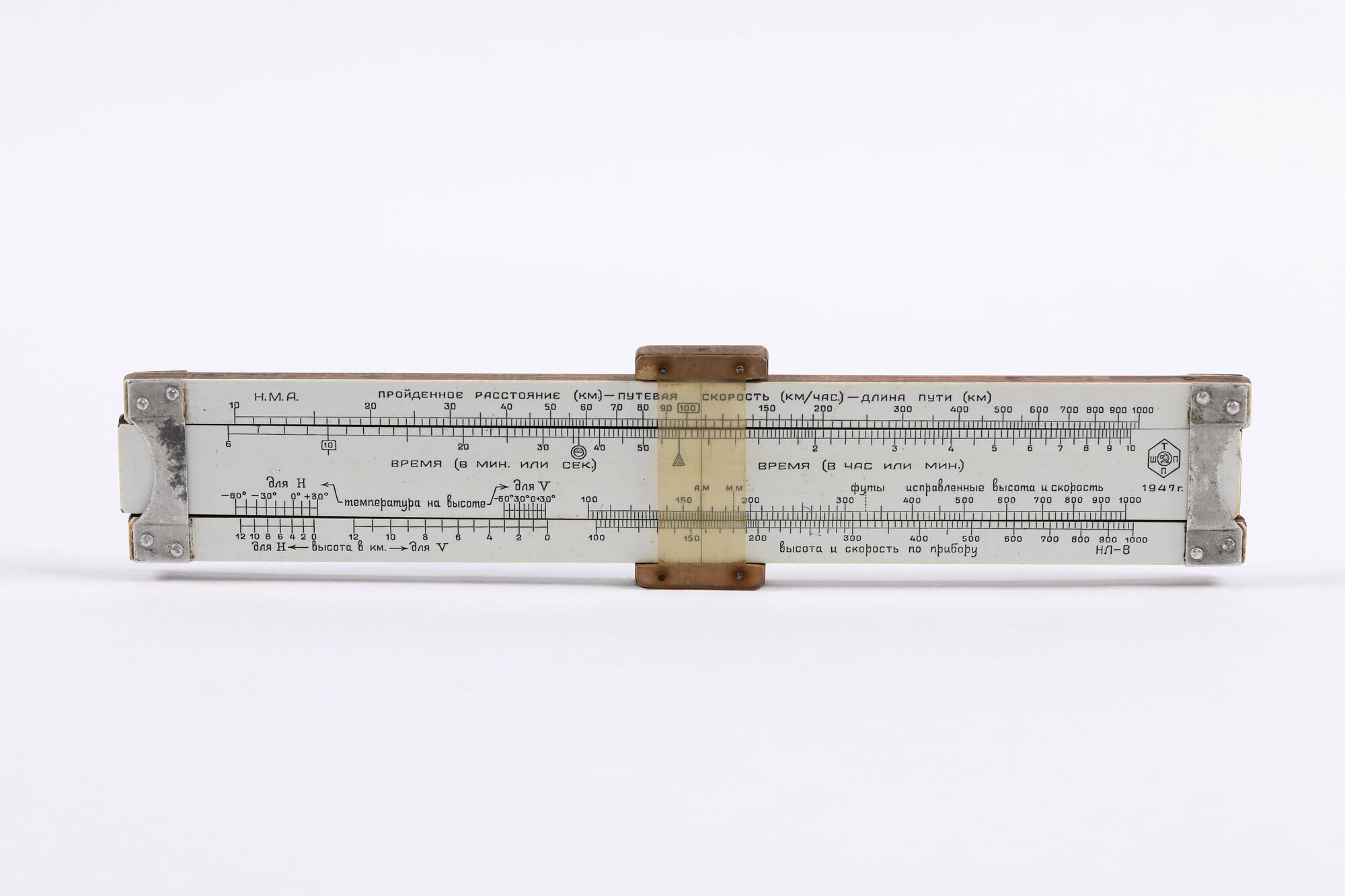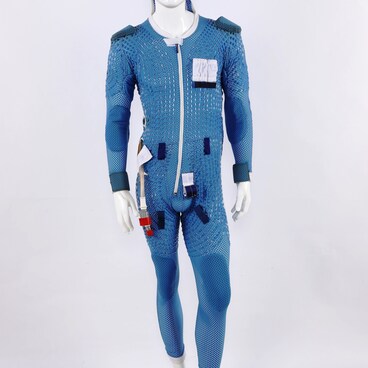The logarithmic slide rule could be seen as a symbol of the engineer’s profession in the XX century. In December 1993, the slide rule that used to belong to Sergey Pavlovich Korolyov, the Soviet Union’s chief rocket designer, was sold at Sotheby’s for $24 000. Another of his slide rules was donated to the Museum of Cosmonautics in Hutchinson, Kansas by his daughter, Natalia Korolyova, in 1994. The label for that exhibit reads as follows: ‘This logarithmic slide rule was used by Sergey Korolyov, the Soviet Union’s chief rocket designer, to make calculations in connection with some of the greatest achievements in the history of space flight.’ It is a typical example of a slide rule — an analogue device widely used to make mathematical calculations until the late XX century.
The rule consists of three parts — the body, the slide (the movable part, in the centre), and the cursor (the transparent band that slides along the rule). Both the front and back of the rule are printed with various scales for measuring. The operation of the slide rule depends on the proper alignment of the scales on the body and the slide.
The logarithmic rule was invented in the XVII century, and there have been many versions of these rules, differing both in shape (either round or rectangular) and in their function. In 1927, the Soviet engineer Vladimir Nemchinov first proposed the idea of a navigators’ slide rule with rectangular scales. In that year L.S. Popov, the head navigator of the Black Sea fleet, designed the first universal navigator’s slide rule. The model NL-8 slide rule, exhibited here, appeared in 1943 and continued to be manufactured till the end of the 1950s. In the aviation industry, this slide rule was used for many purposes, including to calculate speeds, flight heights and distances traveled, to make corrective calculations when dropping bombs, and to calculate the camera settings when taking photographs from the air. The logarithmic slide rule was a standard instrument not just for aviators, but for rocket designers and engineers. Logarithmic slide rules and adding machines were also used in order to perform very many calculations, including for the purposes of designing space technology and determining flight trajectories. The launch of the Earth’s first artificial satellite in 1957, the first manned space flight in 1961, the sending of interplanetary space probes to Venus, the Moon and Mars — all these milestones in space exploration were achieved before computers or calculators were widely available, and when these devices were still unreliable and very slow.
This exhibit was given to the K.E. Tsiolkovsky Museum of Aviation and Cosmonautics in 1993 by Alexandr Kungurtsev, a long-serving aviator from Kirov region. He was the first person in his region to make a parachute descent, in 1935, was one of the founders of the Kirov Air Sports Club, and served in the Great Patriotic War, retiring with the rank of lieutenant colonel.
The rule consists of three parts — the body, the slide (the movable part, in the centre), and the cursor (the transparent band that slides along the rule). Both the front and back of the rule are printed with various scales for measuring. The operation of the slide rule depends on the proper alignment of the scales on the body and the slide.
The logarithmic rule was invented in the XVII century, and there have been many versions of these rules, differing both in shape (either round or rectangular) and in their function. In 1927, the Soviet engineer Vladimir Nemchinov first proposed the idea of a navigators’ slide rule with rectangular scales. In that year L.S. Popov, the head navigator of the Black Sea fleet, designed the first universal navigator’s slide rule. The model NL-8 slide rule, exhibited here, appeared in 1943 and continued to be manufactured till the end of the 1950s. In the aviation industry, this slide rule was used for many purposes, including to calculate speeds, flight heights and distances traveled, to make corrective calculations when dropping bombs, and to calculate the camera settings when taking photographs from the air. The logarithmic slide rule was a standard instrument not just for aviators, but for rocket designers and engineers. Logarithmic slide rules and adding machines were also used in order to perform very many calculations, including for the purposes of designing space technology and determining flight trajectories. The launch of the Earth’s first artificial satellite in 1957, the first manned space flight in 1961, the sending of interplanetary space probes to Venus, the Moon and Mars — all these milestones in space exploration were achieved before computers or calculators were widely available, and when these devices were still unreliable and very slow.
This exhibit was given to the K.E. Tsiolkovsky Museum of Aviation and Cosmonautics in 1993 by Alexandr Kungurtsev, a long-serving aviator from Kirov region. He was the first person in his region to make a parachute descent, in 1935, was one of the founders of the Kirov Air Sports Club, and served in the Great Patriotic War, retiring with the rank of lieutenant colonel.



